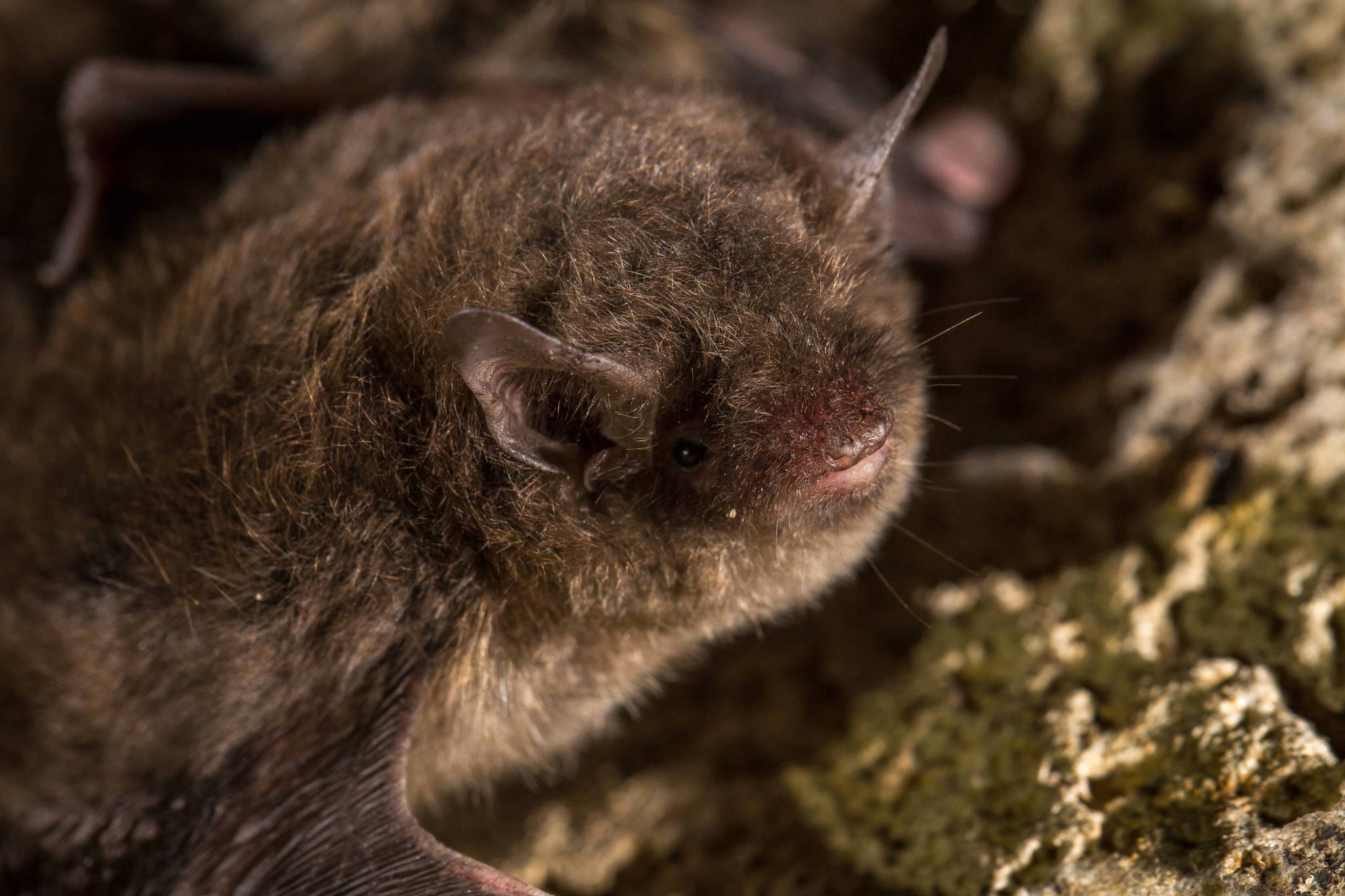A fast-spreading and deadly-to-bats fungal disease hasn’t been seen in Juneau’s bats, but it’s not that far away.
Karen Blejwas, biologist for Alaska Department of Fish and Game, said white-nose syndrome, which has killed millions of North American bats east of the Rocky Mountains, popped up in Western Washington in 2016.
“That was a little unexpected, and it’s not close to where else it’s been detected,” Blejwas said.
[Bat weekend uses fun to teach about winged mammals]
Aside from that odd instance, white-nose syndrome has generally been a concern relegated to Eastern and Midwest states.
“We’re not entirely sure how it got there, but it really caught western bat biologists off guard,” Blejwas said.
That’s why she and other researchers have been studying bats in Southeast Alaska, and that research was the subject of Friday night’s Fireside Lecture at the Mendenhall Glacier Visitor Center.
Blejwas’ talk brought the series of free talks to a close for this year and mostly focused on what little brown bats do after their pups have been weaned.
“It’s a relatively under-studied period,” Blejwas said.
While bats mate in the fall, Blejwas said females store sperm until spring. Then they will ovulate, and in 50 to 60 days a single pup will be born.
By July or mid-August those pups are weaned and mama bats are able to go do bat things, which as Blejwas detailed, mostly means sleeping and eating before hibernating.
Since bats hibernate for about half the year, Blejwas said it’s important for them to put on enough weight to survive from about October until April.
Blejwas shared some data that suggests bats in Southeast Alaska may not vary much in weight throughout the year possibly because the ambient temperature in the places they hibernate may be fairly close to the ideal internal temperature for hibernation.
“When they’re not eating or mating, bats are mostly sleeping,” Blejwas said.
[Tracking Juneau’s endangered bats]
She said in some cases bats were observed spending as many as 22 hours per day in their roosts sleeping.
Researchers have found about 10 hibernacula — places bats hibernate — in the Juneau area. Blejwas said most of them have been found in forested scree slopes around North Douglas and Admiralty Island.
Blejwas said the hope is to find more hibernation spots, and there are a couple of different programs that could help with that.
This summer, Blejwas said a scent detection dog will be trained and used to detect bats.
“There should be plenty of scent for the dogs to detect,” Blejwas said.
The Alaska Citizen Science program could also be helpful.
People can volunteer to drive a survey route with a special bat monitor attached to their vehicle. The acoustic monitoring can even allow researchers to identify bats by their species, Blejwas said.
She said Juneau’s survey route takes about 90 minutes to drive.
This year, monitors will be available to check out at the Mendenhall Glacier Visitor Center , but volunteers need to call ahead because the center will be closed for the month of April. The number is 789-0097.
A driving survey volunteer agreement can also be found online through the department of fish and game’s website. Completed agreements should be emailed to dfg.dwc.bats@alaska.gov.
“The Citizens Science program has become even more important in this era of budget cutting,” Blejwas said.
• Contact reporter Ben Hohenstatt at (907)523-2243 or bhohenstatt@juneauempire.com. Follow him on Twitter at @BenHohenstatt.

